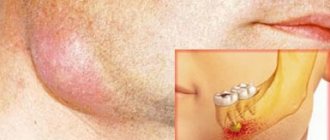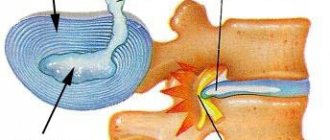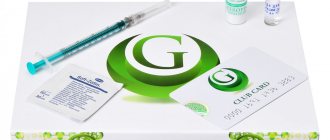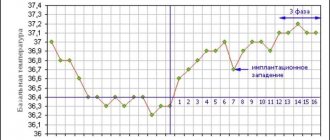Home>Articles>Hepatoprotectors: effectiveness and classification
quick menu (hide)
- How the medicine works
- Liver diseases and hepatoprotectors
- Types of hepatoprotectors
- How the medicine is used
- Liver functions
- The effect of alcoholism on the liver
Most alcohol is processed in the liver. It very seriously damages this organ, both directly by killing cells and indirectly.
Hepatoprotectors are drugs that smooth out the negative effects and increase the toxic threshold of alcohol. They are divided into several types depending on their composition. From this article you will learn:
- about the concept and “working principle” of hepatoprotectors;
- about whether the appearance and development of alcoholic liver disease can be prevented with the help of hepatoprotectors;
- about the types of hepatoprotectors;
- about why people who drink need to take hepatoprotectors;
- about liver functions;
- about how addiction to alcoholic beverages affects the liver.
Pharmacological properties
Hepatoprotectors act in two directions:
- prevent the destruction of cell membranes;
- stimulate the regeneration of hepatocytes.
As a result of this, a gradual restoration of the liver structure and its functionality occurs, the organ’s resistance to the effects of pathological factors increases, detoxification properties increase and the production of enzymes improves.
Organ functions and drug effects
Any disease that affects the liver causes serious disruption in almost all body systems, since the organ performs a number of important functions, in particular the liver:
- responsible for protein, carbohydrate, lipid, pigment metabolism;
- neutralizes the harmful effects of toxins and drugs;
- stores vitamins and microelements;
- produces cholesterol and lipids;
- regulates blood clotting;
- responsible for the production of bile acids and their transport to the gallbladder;
- stimulates intestinal function;
- synthesizes and inactivates some hormones, including sex hormones;
- produces enzymes;
- is a blood repository.
Nature, having endowed the liver with so many functions, took care of its integrity. This is the only organ that can recover even after partial removal. But the body cannot always cope with some factors on its own, namely:
- obesity;
- alcohol;
- medications;
- genetic factors;
- drug use;
- poor environment;
- diabetes mellitus;
- physical inactivity;
- improper nutrition.
Although the liver is capable of recovery, prolonged excessive stress sooner or later disrupts its activity. Hepatoprotectors are designed to protect the liver from such factors. They, of course, will not replace basic therapy, but will complement the effect of prescribed medications and can improve the function of liver cells.
In case of liver pathologies (hepatitis, hepatosis, fibrosis, cirrhosis, liver failure, cancer, etc.) and forced prolonged use of certain medications (anticonvulsants, antitumor, painkillers), the doctor must prescribe hepatoprotectors.
Recently, a myth has formed that this class of drugs is just an invention of “greedy” pharmacists who want to profit from the grief of patients and produce drugs with dubious effectiveness. Opponents of these drugs rely on the fact that in Europe and the USA, liver treatment is not carried out with such medications, since they do not exist in the list of pharmacological agents.
Indications for use
Hepatoprotective drugs are prescribed for:
- Fatty hepatosis
. In this case, medications are used in combination with antidiabetic drugs, a low-calorie diet, and cardio exercises. - Viral hepatitis
. With this disease, hepatoprotectors are used only when a positive effect is not achieved from taking antiviral drugs, or in situations where their use is impossible, for example, in the presence of contraindications. - Toxic hepatitis
. Therapy is carried out comprehensively. Hepatoprotective agents are taken in combination with other medications to restore the liver. In this case, an important condition for treatment is giving up bad habits and proper nutrition. - Alcoholic cirrhosis
. This pathology requires complete abstinence from alcoholic beverages. Otherwise, there will be no positive dynamics from taking the hepatoprotector. - Hepatomegali
(pathological enlargement of the liver with parallel damage to hepatocytes). In this case, hepatoprotectors are used in combination with a therapeutic diet and moderate physical activity.
Another indication for the use of drugs is chemotherapy. During its implementation, a huge number of hepatocytes suffer, as a result of which the liver fails. And to prevent complications, all patients who have undergone treatment with antimicrotubulin or alkalizing agents are prescribed hepatoprotectors during the rehabilitation period.
Vitamins
The history of treatment of liver diseases began after the Great Patriotic War in the 50s of the 20th century with the use of vitamins. Previously, there were no other drugs for the treatment of liver diseases. Today there are many preparations containing vitamins in various combinations and quantities, often not always adapted to the needs of the body for liver diseases. We can only briefly say that vitamins are in any case necessary for the body, even if it is healthy. They are components of food and, with a balanced diet, enter the body in sufficient quantities. You should know that vitamins for liver diseases should be taken in the presence of their deficiency and with mandatory dosage taken into account. Therefore, we will not dwell on vitamins.
Originals and analogues: Undevit, Complivit, Vitrum, Supradin, etc.
Contraindications for use
Hepatoprotectors are a group of drugs that includes too large a list of drugs. And it is impossible to identify general restrictions on their use. But there are some contraindications that most of them have. This:
- pregnancy and lactation;
- age under 18 years;
- intolerance to components.
In the presence of large rocky formations, taking choleretic drugs is dangerous, since they stimulate the synthesis of bile and, along with it, stones can enter the ducts, clogging them. It is strictly forbidden to take certain medications if you have kidney disease, pancreatic pathologies, or acute hepatitis.
Essential phospholipids
Research on essential phospholipids, or phosphatidylcholine, began in Germany, where their composition and mechanism of action were studied. These are components of the cell membrane. When it enters the body, part of the active substance is destroyed, and the rest is absorbed and delivered to the liver. It is there that phospholipids are integrated into damaged areas of the cell membrane, thus restoring them. At the same time, their path is complicated, since part of the drug taken is destroyed and digested in the intestines, so the key point in the choice is the dosage. American studies were conducted at a dose of 4.5 g per day, in our country this dose is not recommended for use, which is perhaps why we do not see very strong effectiveness of phospholipids in practice.
Essential phospholipids are obtained from soybeans using a special technology without access to oxygen. Therefore, opening the capsule for use by children is strictly prohibited. The active substance interacts with air and is destroyed. There is also a catch in the drugs in this group. In fact, the active drug is phosphatidylcholine, which is contained in phospholipids, and not the essential phospholipids themselves. The content of this same phosphatidylcholine is indicated in the instructions in small print. For example, 300 mg of phospholipids can contain 24% phosphatidylcholine, that is, 300 mg x 24% = 72 mg, which is not a lot at all... Some drugs contain even less active substance.
You need to be very thoughtful when choosing medications.
The action of phospholipids is aimed at restoring the membrane of liver cells after damage. That is, the medicine begins to work when the liver is already destroyed and does not protect the organ from damage. In addition, they have a slight antioxidant effect that protects against free radicals. This is more important when liver damage occurs due to fatty liver disease. That is, these drugs are not universal, and the strength of their action may be sufficient only for mild changes in the liver.
It is precisely because of the low content of the drug substance (phosphatidylcholine) in essential phospholipids that the potency of drugs in this group is quite low. Due to low efficiency, and as a consequence of “safety,” in many countries of the world, preparations of essential phospholipids are registered as a biologically active additive (BAA).
Originals and analogues: Essentiale forte N (228 mg), Rezalut Pro (228 mg), Essliver (87 mg + vitamins B x 4 daily values), Eslidin (219 mg + methionine 100 mg), Fosfontiale (188 mg + milk thistle 50 mg ), Phosphoglyph (48 mg + licorice 35 mg), etc.
Phosphonciale (188 mg + milk thistle 50 mg), Phosphoglyph (48 mg + licorice 35 mg), etc.
Groups of hepatoprotectors
Depending on the active components and the mechanism of action on the body, hepatoprotectors are divided into the following groups:
- vegetable;
- animals;
- amino acid derivatives;
- phospholipids;
- bile acids;
- Dietary supplements.
Hepatoprotectors with proven effectiveness are most valued in medicine. Unlike other drugs, they act much faster and contribute to a significant improvement in the patient’s condition. However, compared to other products that have side properties, their cost is much higher.
The pathogenetic mechanisms of liver damage are very diverse, but they are all characterized by cellular damage, accompanied by an inflammatory reaction, cytolysis and the development of fibrosis. A similar scenario for the development of a pathological process, albeit with a different initiating mechanism at the start, can develop with viral hepatitis, toxic liver damage, autoimmune hepatitis, metabolic syndrome and other forms of acute and chronic liver damage. It is obvious that in all the mentioned cases, the center of organopathology remains the hepatocyte - the main cell of the liver parenchyma. And if for a number of diseases, primarily viral hepatitis, etiotropic therapy has now been developed that can also have a pathogenetic effect (proven reduction in inflammation, cytolysis and fibrosis under the influence of, for example, interferons a or nucleoside analogues), then in most other cases of damage to the liver parenchyma, the evidence base regarding the effectiveness of the use of various groups of drugs that claim to be a savior of hepatocytes has not yet been established [6, 8, 10].
Nevertheless, there is a fairly wide range of drugs called “hepatoprotectors”. Based on the name, these drugs must somehow universally protect the liver cell under a variety of damage mechanisms [1]. Hepatoprotectors are very heterogeneous in their chemical composition and, as follows from the instructions of the drugs, have multidirectional effects on metabolic processes. Despite many years of clinical experience and numerous scientific studies (in most cases not meeting the principles of clinical studies with a high level of evidence), the boundaries of the use of hepatoprotectors have not yet been delineated. In this publication, the authors tried to give pharmacological characteristics of the main hepatoprotectors and evaluate the results of their practical use in patients with chronic liver damage [1, 6, 10].
Essential phospholipids
In Russia, this group of drugs is the main type of hepatoprotectors, although in the European Union it is little known to a wide range of practicing physicians. To understand the mechanism of the protective effect of essential phospholipids, it should be taken into account that all cell membranes have a fairly typical structure and approximately 75% (mitochondrial membrane is 92%) consist of phospholipids, the basis of which is phosphatidylcholine. In addition to their structural function, phospholipids are involved in the processes of molecular transport, cell division and differentiation, and stimulate the activity of various enzyme systems [1]. Direct damage to the cell membrane is caused by ethanol, some poisons and drugs. In general, damage to the hepatocyte membrane always occurs with any liver damage, however, it is realized through more complex and subtle mechanisms through interaction with circulating immune complexes, autoantibodies, etc. In this regard, count on stabilizing liver damage only by strengthening the hepatocyte cell membrane by supplying from outside the “building material” (phospholipids), without eliminating the main pathogenetic cause of hepatocyte lysis, is not necessary. For example, in classic autoimmune hepatitis or viral hepatitis B, which are based on immune mechanisms of liver damage, it is clear that the main etiopathogenetic agents will be corticosteroids and/or cytostatics, and the use of essential phospholipids in these cases seems to be very ephemeral.
The main functions of phospholipids are to maintain normal fluidity and repair of cell membranes, antioxidant action, protect mitochondrial and microsomal enzymes from damage, slow down collagen synthesis and increase collagenase activity. These mechanisms underlie their physiological antifibrotic effect. Taking into account the basic mechanisms of etiopathogenesis of various liver diseases, this group of drugs can be used, for example, for alcoholic liver steatosis and non-alcoholic hepatopathy as part of the metabolic syndrome [1, 10].
As some studies show, this group of drugs improves biochemical parameters and the general well-being of patients, but in some cases phospholipids can induce the development of cholestasis [1, 5].
Silymarin . The complex preparation silymarin contains a mixture of milk thistle alkaloids, the main active ingredient being silibinin. As follows from the instructions, the drug has hepatoprotective and antitoxic properties. The mechanism of its action is associated with the suppression of lipid peroxidation, as a result of which damage to cell membranes is prevented. In hepatocytes, the drug stimulates the synthesis of proteins and phospholipids, which leads to the stabilization of cell membranes and a decrease in their permeability. As a result, silymarin prevents the loss of cell components, including transaminases, which is clinically manifested by a decrease in cytolytic syndrome. In addition, silymarin prevents the penetration of certain hepatotoxic substances into the cell, in particular the poisons of the toadstool - phalloidin and amanitin. However, there is no convincing data demonstrating a significant increase in the survival rate of patients with acute toxic hepatitis caused by toadstool when taking silymarin in the available literature. Recently, studies have begun to appear in which the antifibrotic properties of silymarin have been discovered, however, the main objects of these studies are patients with metabolic disorders and hepatic steatosis [5, 8].
Ademethionine (S-adenosyl-L-methionine) is a natural substance endogenously synthesized from methionine and adenosine. Ademetionine is involved in at least three types of biochemical reactions: transmethylation, transsulfuration and polyamine synthesis. Transmethylation reactions are an important step in the synthesis of phospholipids (primarily phosphatidylcholine), ensuring membrane fluidity and their polarization, which plays a significant role in the synthesis of bile. Impaired transsulfuration leads to a deficiency of glutathione, the most important cellular antioxidant. Lack of glutathione reduces the resistance of hepatocytes to the damaging effects of free radicals. In addition, ademetionine serves as a precursor to other thiol compounds, such as cysteine, taurine, coenzyme A. Finally, the third group of reactions in which ademetionine takes part, the synthesis of polyamines, is directly related to the processes of hepatocyte proliferation and liver regeneration. Experimental and clinical data indicate the antioxidant and detoxifying effects of ademetionine, as well as the acceleration under its influence of liver tissue regeneration and slowdown of the development of fibrosis.
The most convincing clinical results of using ademetionine were obtained in alcoholic liver disease. With the use of ademetionine in patients with alcoholic cirrhosis, an increase in the initially reduced concentrations of glutathione, cysteine and taurine in the blood serum and liver tissue was noted, which indicates the normalization of metabolic processes. It is known that the main toxic product of ethanol metabolism, acetaldehyde, blocks the glutathione reduction system, which causes damage to hepatocytes by lipid peroxidation products. Ademethionine, being a donor of the sulfhydryl group, helps eliminate glutathione deficiency. In addition to a significant decrease in the level of serum bilirubin, transaminases and g-glutamyl transpeptidase, there is preliminary evidence of a statistically significant increase in survival of patients with alcoholic cirrhosis.
Another area of application of ademetionine is cholestatic liver diseases, in which it is possible to achieve a significant reduction in itching and a decrease in cholestasis enzymes. There is information about the pronounced positive effect of ademetionine in drug-induced cholestasis. In addition to hepatoprotective properties, ademetionine also has an antidepressant effect, the mechanism of which is far from fully understood [1, 5, 8].
Ursodeoxycholic acid (UDCA) is a substance belonging to the group of hydrophilic bile acids. The mechanisms of action of UDCA are complex and have not been fully studied to date. The most likely are cytoprotective and choleretic effects due to competitive inhibition of the absorption of toxic hydrophobic bile acids in the ileum. It has been established that the cytoprotective effect of UDCA on biliary epithelial cells is realized by preventing the release of cytochrome C from mitochondria, which in turn blocks the activation of apoptosis of cholangiocytes and caspases. UDCA also has an immunomodulatory effect, reducing the expression of HLA molecules (Human Leucocyte Antigen) classes I and II on biliary epithelial cells and reducing the production of proinflammatory cytokines (interleukins -1, -2, -6, interferon-gamma). UDCA reduces the saturation of bile with cholesterol by inhibiting its absorption in the intestine, suppressing synthesis in the liver and reducing secretion into bile; increases the solubility of cholesterol in bile through the formation of liquid crystals; reduces the lithogenic index of bile, increasing the content of bile acids in it. Such diverse mechanisms of action are caused by the variety of indications for the use of UDCA.
In primary biliary cirrhosis, UDCA is the drug of choice, not only improving clinical (reduction of weakness, itching, jaundice), biochemical (reduction of cytolysis enzymes and cholestasis) and histological (reduction of liver tissue inflammation) indicators, but also increasing the life expectancy of patients, as demonstrated in numerous clinical studies [1, 5, 8]. The prescription of the drug is pathogenetically justified for diseases accompanied by intrahepatic cholestasis, such as primary sclerosing cholangitis, chronic hepatitis with a cholestatic component (especially alcoholic and drug-induced), cystic fibrosis, atresia of the intrahepatic biliary tract, post-transplantation cholestasis, cholestasis during parenteral nutrition. In addition, UDCA is used to dissolve cholesterol gallstones and for biliary reflux gastritis.
Glycyrrhizic acid . The first mention of the medicinal properties of this compound is found in the papyri of the ancient Egyptian physician Eberus, where he reports on the medicinal properties of licorice, which was used for a number of diseases. In the middle of the last century, the Czech scientist L. Ruzicka deciphered the chemical structure of glycyrrhizic acid, emphasizing its similarity to the steroid structure. Glycyrrhizin is a calcium or potassium salt of tribasic glycyrrhizic acid, the aglycone of which is glycyrrhetic acid, and the carbohydrate part is represented by two molecules of glucuronic acid. To date, the anti-inflammatory, antiallergic, antiviral and immunomodulatory properties of this compound have been described. For the first time, the antiviral effect of glycyrrhizin against the herpes simplex virus, varicella zoster virus, and others was reported by Pompei R. et al. The studies were initially carried out in vitro, and subsequently these data were confirmed in laboratory animals by other researchers, in particular with regard to duck hepatitis A (HAV) and B (HBV) viruses [3, 4].
Takahara T. et al. studied the effect of glycyrrhizin on HBV. It has been established that glycyrrhizic acid modifies the glycosylation and sialylation of the surface antigen of the hepatitis B virus (HBsAg), leading to its retention in the Golgi apparatus, which apparently explains its positive effect in the treatment of HBV infection [11]. The mechanisms of the antiviral action of glycyrrhizin during HCV infection remain unknown to date. However, stimulation by glycyrrhizin of the synthesis of interferon-gamma with subsequent activation of macrophages and B-lymphocytes, increased phagocytosis and antibody production, and activation of NK cells undoubtedly contributes to the course of chronic hepatitis C. At the same time, inhibition of protein kinase P by glycyrrhizin entails inhibition of phosphorylation proteins encoded by the virus in infected cells causes CD4+-mediated cytotoxicity
T cells and tumor necrosis factor alpha. Glycyrrhizin in the receptor sites of the membrane inhibits the penetration of the virus into the cell by blocking carbohydrate enzymes, which indicates a possible suppressive effect directly on the viral RNA (HCV RNA) [8, 9]. In addition, Abe Y. et al. report that, unlike interferon-alpha, which inhibits the late stage of the viral replication cycle, glycyrrhizic acid is active at its early stage [3].
The results of clinical studies of the effectiveness of glycyrrhizic acid in patients with chronic hepatitis remain controversial. Firstly, there are practically no randomized placebo-controlled studies; secondly, most studies do not take into account the effect of glycyrrhizic acid on viral load and liver histology; thirdly, a stable response to the use of glycyrrhizin has not been obtained and there is no data on the effectiveness of its use in compared to interferon-alpha. According to the literature, Japanese doctors have the greatest experience in the practical use of glycyrrhizin, but it is obvious that glycyrrhizin has a proven positive effect in reducing the risk of developing hepatocellular carcinoma in patients with chronic viral hepatitis, especially those who do not respond to treatment with interferon alpha [7, 12, 13 ].
Extremely interesting in this sense is the recent publication by German researchers on the results of a phase II blind, placebo-controlled, randomized trial of the effectiveness of glycyrrhizin in patients with chronic hepatitis C who had not previously responded to antiviral therapy with interferon-alpha. It demonstrated a very rapid biochemical response (after two weeks of treatment), although without a significant effect on viremia. In some patients, after 6 months of therapy, a histological examination of the liver was performed, but no significant effect of the drug on the degree of fibrosis was detected [9]. At the same time, phase III clinical trials, where the use of glycyrrhizin continued for at least 12 months, demonstrated, along with an unconditional biochemical response to treatment in more than 78% of patients, a reduction in fibrosis in 2/3 of these patients [2].
The domestic dosage form of glycyrrhizin is the drug Phosphogliv, consisting of phospholipids obtained from soybeans or sunflower seeds, and glycyrrhizin itself. To increase the bioavailability of phospholipids, for the first time in the production of drugs of this group, essentially nanotechnologies were used. The drug can be considered as an equivalent to the Japanese drug Neominophagen, but unlike the latter, Phosphogliv is available in two dosage forms - tablets and powder for solution. The most promising injection dosage form of the drug has demonstrated effectiveness in fairly quickly reducing cytolysis and immune inflammation in patients with chronic viral hepatitis. This, according to the author, is explained precisely by the action of glycyrrhizin, the content and bioavailability of which is higher in the injection form. The tablet form of the drug can be classified as a drug containing phospholipids, since the amount of glycyrrhizin declared by the manufacturer in tablet form, as well as the pharmacokinetics and pharmacodynamics of glycyrrhizin administered orally, do not imply a pronounced biochemical response.
Our own experience of using Phosphogliv and the experience of colleagues allow us to position it as a drug with an active hepatoprotective effect, primarily in patients with viral liver damage, as an additional agent to standard antiviral treatment or as the main and, alas, only remedy for patients receiving antiviral treatment interferon-alpha is not indicated for any reason (chronic hepatitis C with a transplanted kidney, advanced stage of viral hepatitis, etc.) [2].
In addition, almost all researchers emphasize that prescribing Phosphogliv against the background of traditional antiviral therapy with interferon-alpha significantly minimizes the side effects of the latter. Phosphogliv should be used long-term, the patient should be oriented towards therapy for a period of a year or more. In this case, it is necessary to monitor the level of blood pressure and potassium content in the blood serum, since glycyrrhizin can cause symptoms of hyperaldosteronism in some patients, which, however, are quickly and reliably relieved by minimal doses of spironolactone on the day of injection and the day after it. Long-term administration of Phosphogliv in the form of injections does not cause the development of phlebitis, which is apparently due to the pronounced anti-inflammatory effect of the drug.
Of course, the effectiveness of Phosphogliv in patients with chronic diffuse liver diseases, primarily viral, needs to be studied. Taking into account the steroid-like chemical structure and biological action of glycyrrhizin, in our opinion, it would be extremely interesting to study the effect of the injectable form of the drug Phosphogliv in patients with attacks of acute alcoholic hepatitis or autoimmune hepatitis.
Despite a fairly wide range of drugs with hepatoprotective properties, they must be prescribed carefully and strictly differentiated. It is necessary not only to clearly understand the chemical structure of a particular drug, but also to know the results of its use, both according to literature data and taking into account the experience of colleagues. In this case, hepatoprotective drugs will receive a truly objective assessment of their effectiveness and safety profile.
Reviews from people
We have selected some reviews from people who have used various hepatoprotectors:
- Maria. I used to have serious problems with the liver, so for prevention I take a course of hepatoprotectors once a year. I’m not sure whether they help me or not, but I haven’t felt any deterioration in my health for 5 years now. When I was a teenager, I was treated with Essentiale - the drug helped a lot, and as a form of prevention I prefer something homeopathic or milk thistle decoctions.
- Anton. I have had epilepsy since I was 21. As soon as anticonvulsant therapy was selected, the neurologist prescribed Karsil. I didn’t believe I would need it because I was taking handfuls of PEP and didn’t want to add more medication to it. But after 3 years, liver tests worsened, and I had to cleanse my liver. Since then I have been taking hepatoprotectors twice a year and following diet No. 5.
- Egor. I underwent a two-week liver cleanse with Heptral as a preventive measure, since I often drink red wine, eat fatty meats and other “healthy” foods. There were no obvious changes in my health, but my health had never bothered me before. The only big advantage of taking the hepatoprotector that I noted was the improvement in intestinal perilstatics.
- Veronica. She was registered with her illness and regularly donated blood. The drug Phosphogliv was prescribed to me by my attending physician. I can’t say that it somehow protected my liver and improved my condition. It happened that I did not take hepatoprotectors for years, and sometimes I drank it regularly. I didn't notice any difference. Each time I used them I felt sick and, interestingly, I got a runny nose. When the diagnosis was finally removed and the main treatment stopped, the liver tests returned to normal. This was not associated with hepatoprotectors. As soon as I stopped taking the medications, everything returned to normal. I consider these drugs to be a common money grab.
- Alexei. When I underwent a medical examination at the enterprise, doctors strongly recommended treating my liver, as there was a possibility of developing cirrhosis. I spent three weeks in the hospital, was given a course of heptral, and after discharge I continued treatment with the hepatoprotector on my own. Two months of therapy cost me 12 thousand rubles, but my health improved. The latest examination showed a significant improvement in the condition of the organ.
Dietary supplements or homeopathic medicines
List of drugs:
- Galstena with active plant components - milk thistle, medicinal dandelion and celandine. The drug also contains phosphorus and sodium sulfate. Prescribed for the treatment of liver pathologies occurring in acute and chronic forms, in case of impaired functioning of the gallbladder, chronic pancreatitis.
The medicine is taken after meals or 1 hour before meals. Children under one year old are prescribed ½ tablet 3 times a day, children 1-12 years old - ½ tablet (or 5 drops of the drug), children over 12 years old and adults - 1 tablet. In severe forms of the disease, the frequency of taking the drug is increased to 8 times a day.
- Hepel. The medicine contains spotted milk thistle, components of the quinn tree, celandine, nutmeg, phosphorus and colocynth. It has anti-inflammatory, analgesic, choleretic and antidiarrheal properties. Prescribed to patients suffering from bloating, appetite disorders, eczema, acne on the body, as well as toxic and inflammatory liver diseases. Hepel is taken three times a day, one tablet. In severe forms of pathology, patients are administered 1 ampoule of the drug intramuscularly.
Ornithine aspartate - Hepa-Merz
Positive opinion - Ornithine helps reduce high levels of ammonia, is used for disorders of brain function associated with impaired liver function, as well as for fatty degeneration and toxic hepatitis. This medicine is practically not used for prevention.
The effectiveness of Hepa-Merz was proven in a randomized multicenter study in patients with liver cirrhosis with elevated levels of ammonia in the blood. It is prescribed for various types of hepatitis, non-alcoholic steatohepatitis, especially for hepatic encephalopathy and cirrhosis of the liver.
Negative opinion - in the case of alcoholic liver damage, it has practically no effect, so supporting and protecting the liver with this remedy is ineffective. A noticeable effect is observed only in hepatic coma. It is advisable to use the drug for the purpose of short-term recovery from this state.
| Hepa-Merz Composition: active ingredient Ornithine Used in the treatment of severe liver damage. Reduces high levels of ammonia in the body. Side effects: nausea, vomiting. Contraindicated: lactation, pregnancy with caution, in severe renal failure. Price: 10 pack. 650-700 rub., 30 packs. 1600-1700 RUR, 10 amp. 2500 rub. |









